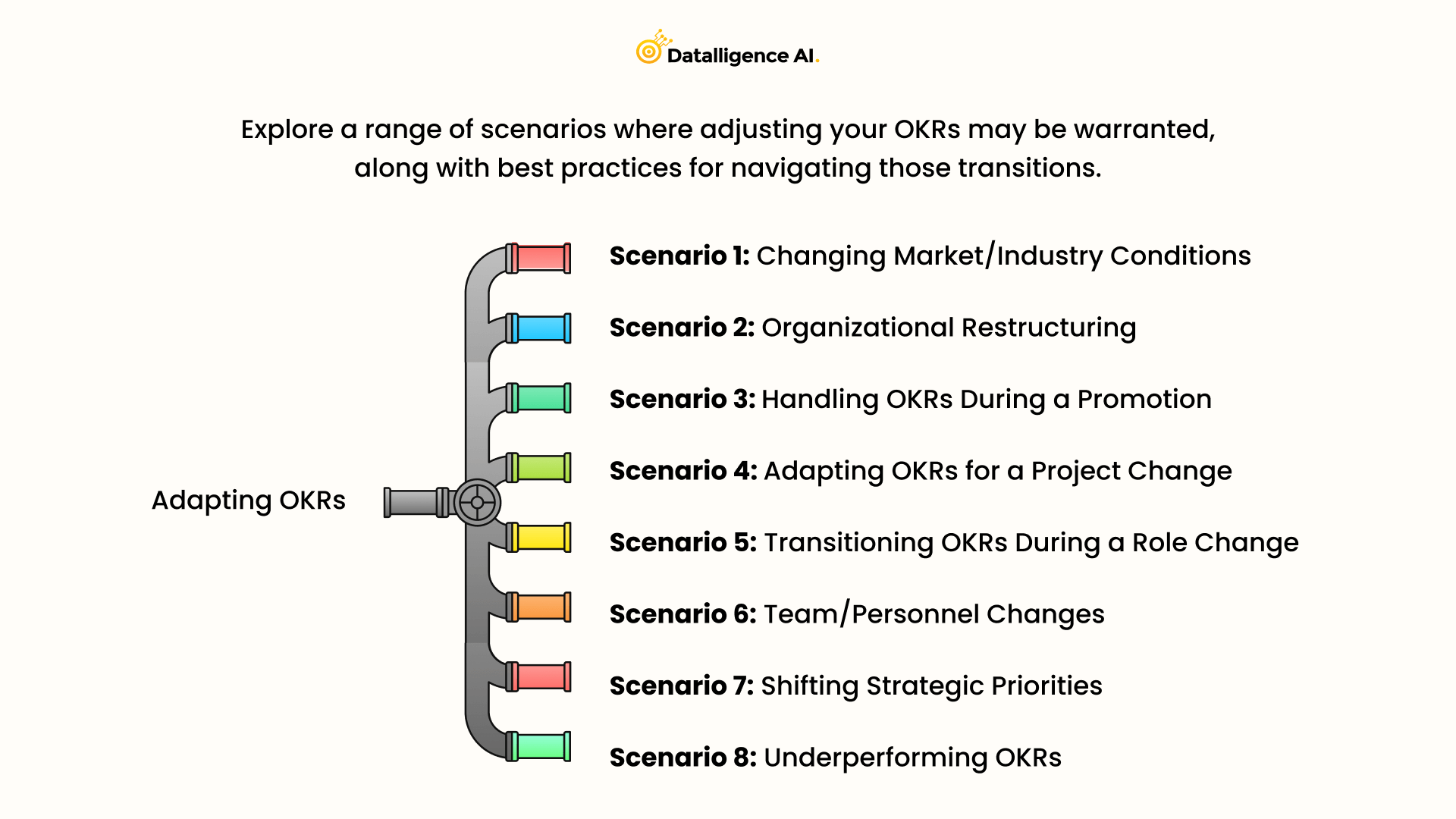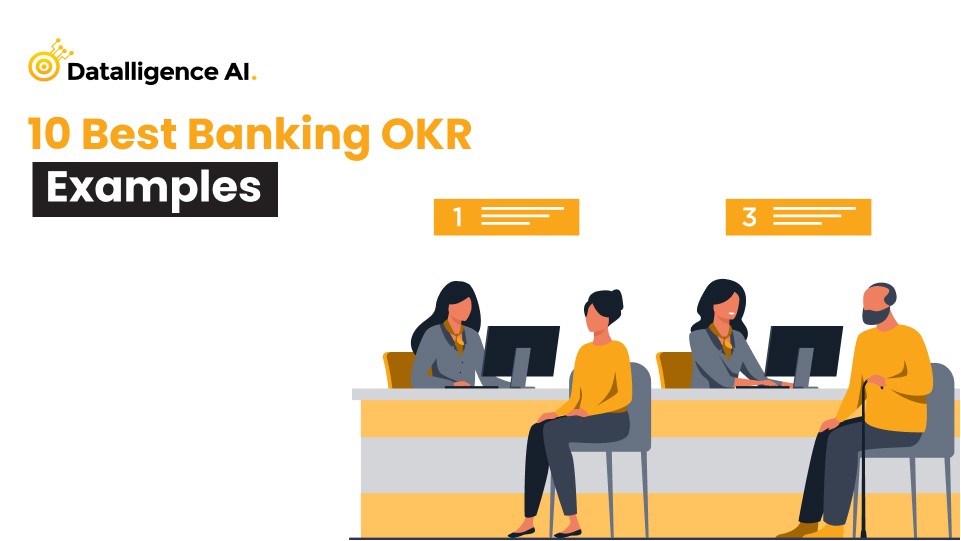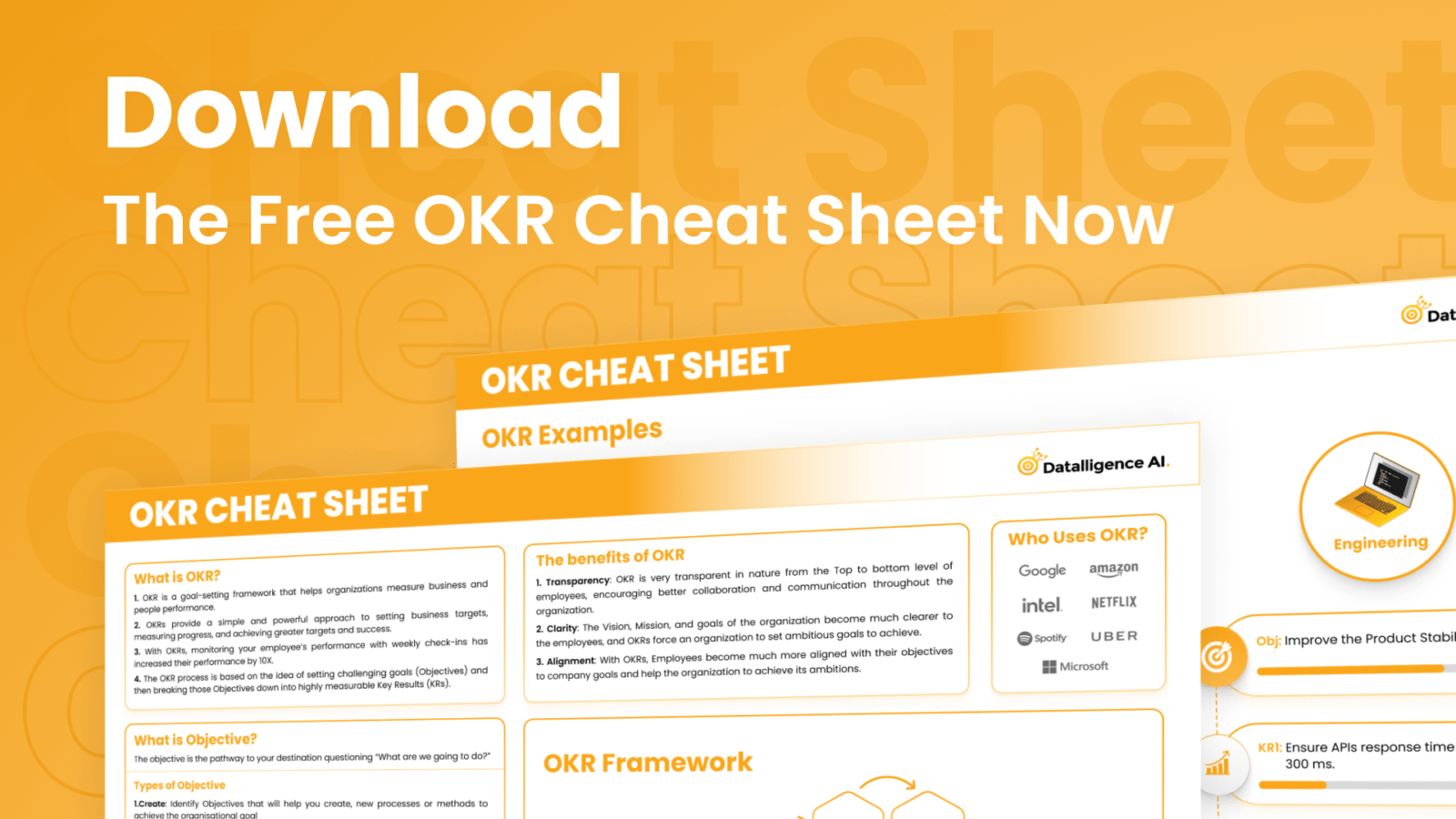As powerful as the Goal Setting framework can be for driving focus and accountability, the reality is that businesses and teams rarely operate in a perfectly static environment. Market conditions shift, priorities evolve, resources fluctuate, and personnel changes happen. In the face of this inevitable change, the ability to adapt your OKRs accordingly is a critical skill.
However, this doesn’t mean you should be constantly revising your OKRs on a whim. Frequent, haphazard OKR changes can undermine the very benefits the framework is meant to provide. Instead, mastering OKR adaptability is about striking the right balance – understanding when and how to thoughtfully update your OKRs to keep them relevant and impactful.
In this blog post, we’ll explore a range of scenarios where adjusting your OKRs may be warranted, along with best practices for navigating those transitions.

Scenario 1: Changing Market/Industry Conditions
One of the most common triggers for OKR updates is a shift in your broader market or industry landscape. Whether it’s a major technological disruption, regulatory changes, increased competition, or a global event like a pandemic, external forces can significantly impact your business priorities and goals.
When faced with such upheaval, it’s important to resist the knee-jerk reaction to just scrap your existing OKRs and start from scratch. Instead, take the time to carefully assess how the changes affect your ability to achieve your current objectives. Are there certain key results that are no longer relevant or feasible? Are there new, critical outcomes that need to be added?
The key is to strike a balance – preserve the OKRs that are still strategically important, but be willing to adapt or replace the ones that have become misaligned. This approach allows you to maintain continuity and momentum where possible, while also positioning your team to effectively navigate the new realities.
A best practice here is to convene a “state of the business” review with key stakeholders. Gather input on the market shifts, discuss the implications for your goals, and build consensus on the necessary OKR changes. This collaborative process not only leads to better-informed decisions, but also helps ensure cross-functional alignment as you move forward.
Scenario 2: Organizational Restructuring
Mergers, acquisitions, divestitures, and other major organizational changes can have a profound impact on your OKRs. When the very structure or focus of your business shifts, your goals and priorities often need to shift as well.
In these scenarios, the first step is to get clarity on the new organizational vision and strategy. What are the key priorities and objectives that the leadership team has defined? How do these align (or not) with your current OKRs?
From there, you’ll need to carefully assess which of your existing OKRs remain relevant and which ones need to be adapted or abandoned. This may involve a top-down process where higher-level OKRs cascade down to your team, or a bottom-up approach where you work to align your goals with the new organizational direction.
Importantly, don’t just assume that your OKRs need a complete overhaul. There may be some objectives and key results that are still strategically important, even if the context has changed. The goal should be to retain as much continuity as possible, while also ensuring your OKRs are fully in sync with the new realities.
Another best practice is to engage in a formal “reset” process, ideally timed with your standard OKR review cadence. This allows you to thoughtfully evaluate your OKRs, identify what’s working and what needs to change, and then realign your focus for the next period. By treating OKR changes as part of a regular rhythm rather than a one-off event, you can build momentum and minimize disruption.
Scenario 3: Handling OKRs During a Promotion
When you receive a well-deserved promotion, it’s an exciting time but can also create some uncertainty around your existing Objectives and Key Results (OKRs). As you transition into your new role, here’s how to approach updating your OKRs
Review Existing OKRs
Start by carefully evaluating your current OKRs. Assess which ones are still relevant and aligned with the responsibilities and priorities of your new position. Some OKRs may carry over, while others may need to be adjusted or replaced entirely.
With your expanded role and responsibilities, there are likely new focus areas and objectives that need to be incorporated into your OKR set. Take the time to clearly define these new priorities, ensuring they complement any existing OKRs you plan to retain.
It’s important to have an open dialogue with your manager about the OKR changes you’re proposing. This allows you to align on the strategic rationale, get buy-in on the new objectives, and ensure the revised OKRs are well-suited to your promotion.
Once you’ve determined which OKRs to keep, modify, or add, formally update them during your next scheduled Reflect & Reset process. This allows you to thoughtfully incorporate the changes, while also maintaining the regular cadence and discipline of the OKR framework.
The key is to approach OKR updates with a balance of continuity and evolution. Retain the objectives and key results that are still strategically relevant, while also incorporating new priorities that reflect the expanded focus and responsibilities of your promotion.
Scenario 4: Adapting OKRs for a Project Change
Project changes, whether driven by shifts in strategy, resource constraints, or other factors, can significantly impact your existing Objectives and Key Results (OKRs). Here’s how to effectively navigate OKR updates in the face of a project change:
Start by carefully analyzing how the project change affects your ability to achieve your current OKRs. Which objectives and key results are now infeasible or no longer aligned with the new project scope and timelines? Identify the specific OKRs that need to be revisited.
Engage with key project stakeholders to fully understand the new priorities, constraints, and timelines. This allows you to make informed decisions about which OKRs need to be modified and how. Maintain transparent communication throughout the process.
Collaborate closely with your manager to determine the necessary OKR changes. Together, identify which objectives and key results can be retained, which ones need to be adjusted, and any new OKRs that should be incorporated. Ensure you have alignment on the strategic rationale.
When it comes time for your next scheduled Reflect & Reset, formally incorporate the OKR changes you’ve identified. This preserves the regular cadence and discipline of the OKR framework, while also allowing you to thoughtfully update your goals.
The goal is to strike a balance between maintaining continuity where possible and adapting to the new realities introduced by the project change. By involving key stakeholders and your manager in the process, you can ensure the revised OKRs remain strategically aligned and achievable.
Scenario 5 : Transitioning OKRs During a Role Change
Accepting a new role, whether within your current organization or at a new company, presents both an opportunity and a challenge when it comes to Objectives and Key Results (OKRs).
When moving into a new role, it’s generally best to start with a clean slate for your OKRs. Avoid the temptation to simply carry over your previous OKRs, as the responsibilities, priorities, and context of your new position are likely quite different.
Collaborate closely with your new manager to define a fresh set of OKRs that are fully aligned with the goals and expectations of your new role. Engage in open discussions about the key focus areas, critical outcomes, and appropriate key results.
Use the first Reflect & Reset cycle in your new role to formally establish your OKRs. This allows you to thoughtfully define your objectives and key results, ensuring they are well-suited to your new position and can be effectively measured and tracked.
The transition to a new role is an opportune time to reset your OKR slate and start fresh. By working closely with your new manager, you can define a set of OKRs that are tailored to the specific responsibilities, priorities, and success metrics of your new position. This helps you hit the ground running and set yourself up for success in the next chapter of your career.
Scenario 6: Team/Personnel Changes
Few things can shake up your OKRs like significant changes to your team composition. Whether it’s a key hire, a departure of a critical team member, or a reorganization of roles and responsibilities, these personnel shifts can dramatically impact your ability to achieve your current goals.
When faced with such changes, it’s important to revisit your OKRs through the lens of your new team dynamics. Which objectives and key results are still feasible given the changes in skills, bandwidth, and areas of focus? Are there new priorities or areas of emphasis that need to be incorporated?
One helpful approach is to map your OKRs to the specific roles and responsibilities on your team. This allows you to quickly identify which OKRs may be affected by personnel changes, and where you’ll need to adjust accordingly. It also encourages you to think critically about how the work actually gets done, rather than just focusing on the high-level goals.
Additionally, make sure to involve your team in the OKR adjustment process. Seek their input on the feasibility of current OKRs, ideas for new priorities, and ways to redistribute work in light of the changes. Not only does this lead to better-informed decisions, but it also helps foster buy-in and ownership of the revised OKRs.
Importantly, don’t view team/personnel changes as a free pass to start from scratch on your OKRs. Aim to maintain as much continuity as possible, focusing on adapting and evolving your existing OKRs rather than scrapping them entirely. This preserves the momentum and learnings you’ve accumulated, while still allowing you to respond effectively to the new realities.
Scenario 7: Shifting Strategic Priorities
Even in the absence of major organizational or environmental upheaval, your strategic priorities as a business or team can shift over time. Perhaps you’ve identified new opportunities to pursue, or you’ve realized that certain objectives are no longer as critical as you once thought. In these cases, adjusting your OKRs accordingly is essential.
The key here is to avoid the temptation of constantly tinkering with your OKRs. Jumping from one priority to the next without allowing time for focus and execution can be just as counterproductive as not updating your OKRs at all. Instead, aim to make more substantive, thoughtful changes to your OKRs on a regular cadence – typically at the end of each quarterly or annual OKR cycle.
One helpful exercise is to conduct a “strategy refresh” session with your leadership team or key stakeholders. This allows you to step back, re-evaluate the landscape, and identify the most critical priorities for the next period. From there, you can work to translate those strategic imperatives into a revised set of OKRs that aligns your team’s efforts and attention.
When making these kinds of adjustments, be mindful of the dependencies and linkages between your various OKRs. Changing one objective or key result may have ripple effects that require updates elsewhere. Take the time to map out these connections and ensure your revised OKRs form a cohesive, mutually reinforcing system.
Additionally, be transparent about the reasons for the OKR changes. Share the strategic rationale, the specific revisions, and the expected impact with your team. This not only helps maintain trust and alignment, but also prepares everyone for the shift in focus and accountability.
Scenario 8: Underperforming OKRs
Sometimes, the need to adjust your OKRs has less to do with external factors and more to do with the fact that your current goals simply aren’t working as intended. Perhaps you set overly ambitious targets, encountered unforeseen roadblocks, or just misjudged the feasibility of certain objectives.
In these cases, the temptation may be to either abandon the underperforming OKRs entirely or to simply lower the bar in order to achieve “success.” However, both of these approaches miss the true value of the OKR framework – namely, the opportunity to learn, iterate, and continuously improve.
Instead, view underperforming OKRs as a chance to engage in a rigorous reflection and problem-solving process. What went wrong? What assumptions did you get wrong? What resources or capabilities were missing? Dig into the root causes, and use those insights to thoughtfully revise your OKRs for the next period.
This may involve adjusting the key results to make them more achievable, reallocating resources to address critical gaps, or even replacing the objective entirely with something more aligned to your current realities. The key is to avoid knee-jerk reactions and instead take the time to understand what went wrong and how you can do better going forward.
Importantly, don’t view this process as a failure. OKRs are inherently aspirational – they’re meant to push you outside your comfort zone and encourage risk-taking. Occasional underperformance is not only normal, but can actually be a sign that you’re aiming high enough. The true failure would be to stop challenging yourself and set the bar too low.
By approaching underperforming OKRs with curiosity, humility, and a growth mindset, you can turn them into valuable learning opportunities that strengthen your OKR muscles over time.
Conclusion
Navigating change and uncertainty is an inevitable part of the OKR journey. Whether it’s shifting market conditions, organizational restructuring, team changes, evolving strategic priorities, or underperforming goals, the ability to adapt your OKRs accordingly is a critical skill. Having a right OKR tools can make the journey simple and effective
However, this adaptability must be balanced with discipline and rigor. Resist the temptation to constantly tinker with your OKRs on a whim. Instead, aim to make more substantive, thoughtful changes on a regular cadence – typically aligned with your standard OKR review and reset process.
By understanding the various scenarios that may warrant OKR updates, and applying best practices for navigating those transitions, you can keep your goals and priorities aligned, your team focused and motivated, and your business poised to succeed, no matter what changes come your way.











